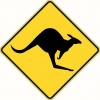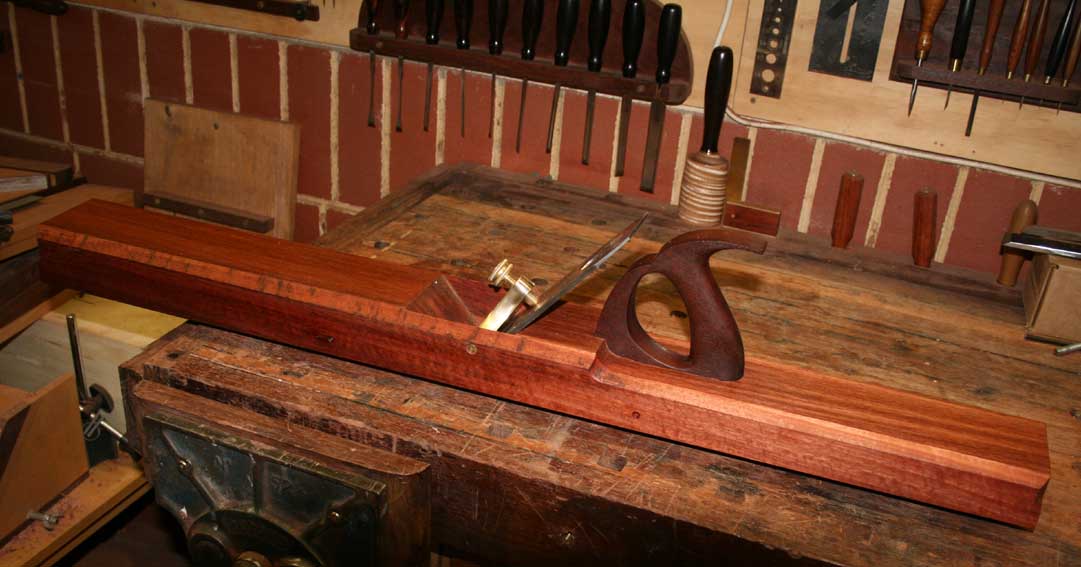The first question when thinking about fences for jointer planes is: "Do you need one?". Well to be fair the answer could be definitely no, definitely yes, or maybe. Starting with the definitely no perspective, you can, with practice, use your fingers to shoot a board and then check it with a square, making adjustments as needed. You can also make a long shooting board and use your bench as a fence. In certain cases you can match plane two boards and they will match up regardless of the angle. These all work for a 90 degree angle. In the definitely yes group are people who have a lot of the same angle to do and wish to speed things up a little by not having to check for the accuracy of the angle. Then there is the maybe group. People whose eyes are starting to fail and the hands/arms are giving out. Thats when a fence can act like a crutch and help accomplish the task. So the following are examples of different fences and some details about them. Note: If the fence is not square to the plane by a little bit, you can sometimes tilt the blade (with lateral adjuster if it has one). You can also add beveled boards to most fixed fences for non-90 degree angles.
When installing a fence on a plane, keep it towards the nose end of the plane. It need to register before it cuts. Also, some fences may have interference with where your knob and tote are. They typically work best on longer planes in the 22" or longer sizes. In my pictures below you will see either #5 or #7 sized planes.
Starting with a simple one made out of plywood, I wanted to try a few things. First, I made it as long as my #7 Stanley. Its basically made of two 1/2" thick pieces of plywood glued together. The first piece is clamped to the side of the plane. It was shaped a little on the top for hand clearance. As is, it won't work well this way. Yes the board is 90 degrees to the bottom, but, the blade is inset from the side. So another plywood strip was added to the inside of the outer board. Again, it won't work this way well either. You see that extra board goes over the blade and needs a small clearance notch. Now it will work. This fence is 22" long by 2 1/2" wide. It weights 1lb 12oz. Trying it out on a 3/4" thick board it worked fine but felt a little off. Looking closer I realized that the plane was not centered on the board. So I added another 1/2" plywood filler strip with screws to make it removable. It feels much better now being centered. Removing the strip it centers well on a 1 1/2" board. If interested I can post pictures of the build.
01 Wood.jpg
Looking at manufactured fences, starting with the earliest. Levi Alexander patented his design July 16, 1872 (#129,508). It was designed to be screwed to the side of wooden planes. It allowed a range of 45, 90, and 135 degrees. It also offered the ability to offset the fence about an inch inward. If desired, you can make some clamping blocks to mount to a metal plane. There are no holes for mounting a wooden face. The face measures 9 1/4" long by 2" high. It weights 1lb 11oz. It is unmarked but some examples indicate a label was stuck on and may have had gold pinstriping on the black jappaned fence. (This one has been nickel plated).
02 Alexander.jpg
The Alexander fence at some time was being manufactured by Langdon (of miter box fame). They were located on the Millers Falls property and sales were also handled by M-F. In 1904 Langdon introduced a replacement for the Alexander with one they called the "Perfection Jointer Gauge". This one was designed for metal planes and featured two cam locks to hold the fence to the plane. It is usually only marked on the adjust knob. It is 9 1/8" long by 2" high. Weights 1lb 14oz. (This one has been nickel plated).
03 Langdon Perfection.jpg
Millers Falls eventually bought Langdon and modified the fence slightly. They added their name to the fence along with the 88 model number. They also added a very handy side knob. It was manufactured until 1944. Its the same size as the Perfection but weights 1lb 15oz. (This one has been nickel plated).
04 Millers Falls 88.jpg
Stanley brought out their model 386 in 1913 that was patented by A.F. Schade on Apr 1, 1913 (#1,057,582). It uses two clamps to hold the fence to the side of the plane but also have two additional top screws pulling the fence up tight to the bottom of the plane. Most fences can be mounted to wooden planes by removing the clamps but this model would also require some notches to clear the additional screws. This fence is clearly marked on the fence with the Stanley 386 and patent date. Normally this fence was totally nickel plated from the factory. It has a handy side knob and screw holes for filler strips. It is 11" long by 2 1/4" high. It weighs 1lb 14oz.
05 Stanley 386.jpg
Stearns introduced several models. Not sure when they started selling these but they were in a 1924 catalog. The number 6 (not shown, is similar to the Perfection in size. The clamping was done either with the cam type or screws pointing down on the side edge of the plane. The one shown here is the number 7. It has three clamping points and was designed for wooden planes as well as the metal ones. It is 7" long by 1 3/4" high. It weights 1lb 2oz. (This one has been nickel plated).
06 Stearns 7.jpg
Not shown are the current ones from Lee Valley. They are made from cast aluminum. They have different models with some only for their planes. They do have a version that is only 90 degrees and magnets. The adjustable designed for other manufacturers should work fine.
One other not shown is by St. James Bay. Theirs is a cast bronze similar to the Stearns with top mounted clamping screws.
My preference would be the Stanley 386 and then the original Alexander. The Millers Falls is also good. The only ones I would recommend against are the real short ones (like the Stearns #7). The short ones just don't register as well.





 Reply With Quote
Reply With Quote















